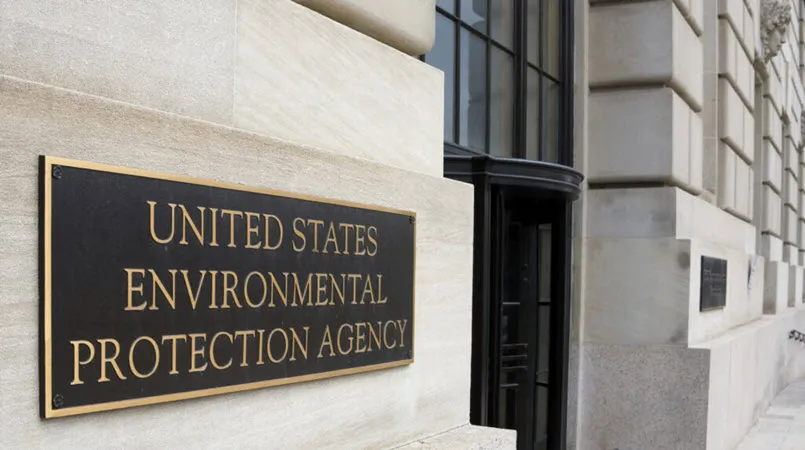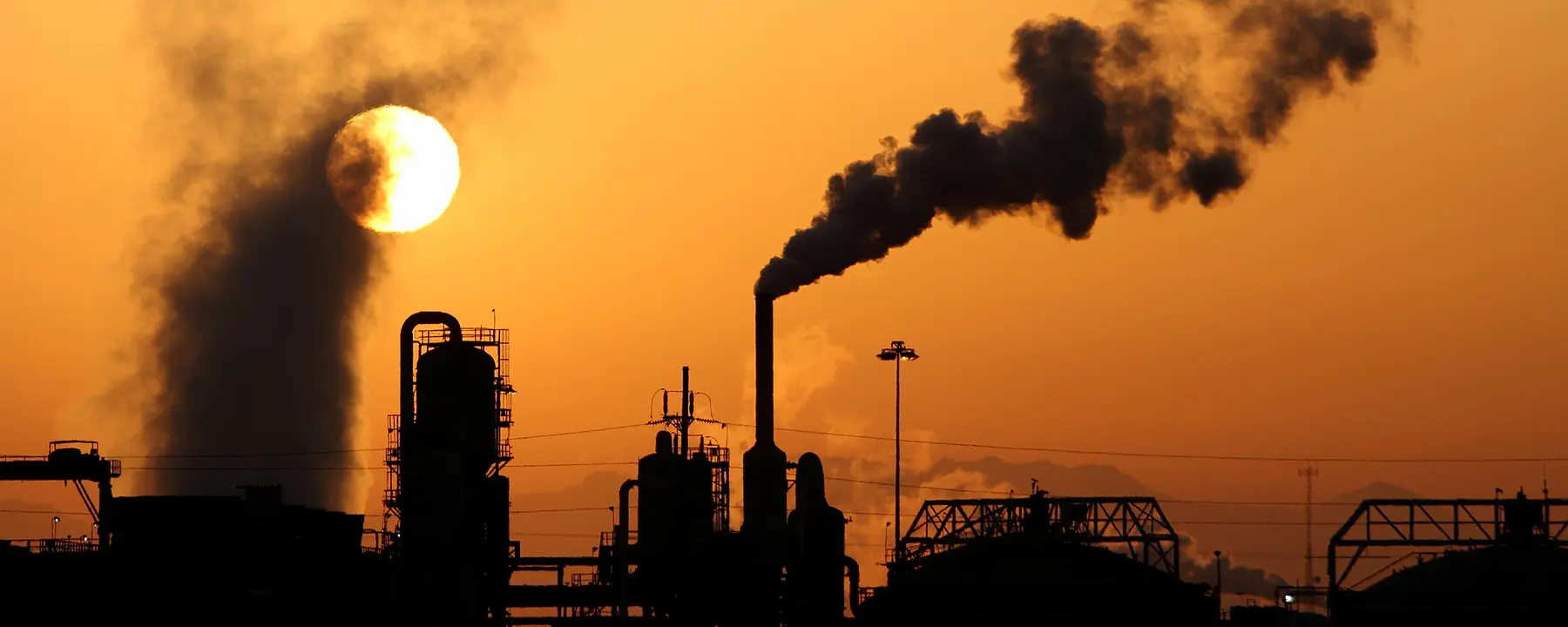
As carbon dioxide removal (CDR) and carbon capture and storage (CCS) technologies continue to advance, the need for regulations ensuring safety is becoming more critical.
These emerging technologies, essential to achieving global climate goals, have various safety concerns that policymakers must address to protect both the environment and communities.
In the US, several policies are being developed to support the safe and responsible implementation of both CCS and CDR.
Direct air capture (DAC), a specific CDR approach, is especially gaining attention due to its potential in removing accumulated CO2 from the atmosphere.
Despite their differences, DAC and CCS share some infrastructure and regulatory concerns. Lawmakers are now tasked with finding the best ways to regulate these technologies and ensure they don’t negatively impact public health or the environment.
“The safe deployment of carbon capture technologies is crucial if we are to meet our climate goals,” said Danielle Riedl, a climate policy expert. “We need robust regulations that address the unique challenges posed by both DAC and CCS technologies.”
>> RELATED: EPA Releases 2023 Data Collected Under Greenhouse Gas Reporting Program

How Do DAC and CCS Help Meet Climate Goals?
The Intergovernmental Panel on Climate Change (IPCC) recognizes the vital, though limited, role DAC and CCS will play in reducing carbon emissions. CCS focuses on preventing CO2 from entering the atmosphere, while DAC removes CO2 that has already accumulated.
In the coming decades, both technologies are expected to complement one another, especially in addressing residual emissions.
CCS technologies capture CO2 at the emission source, like power plants, while DAC facilities pull it directly from the ambient air. Both approaches require stringent safety regulations, as their large-scale implementation could present unforeseen risks.
“Regulating these technologies ensures that we not only reduce emissions but also protect the health of surrounding communities,” noted Willy Carlsen, who has been working on climate policy for over a decade.
Current US Regulations for Carbon Capture and Removal
The Environmental Protection Agency (EPA) currently oversees several aspects of carbon capture and sequestration. Under the Clean Air Act, the EPA sets national standards for air quality and emission reductions. This ensures that new CCS projects meet the highest environmental standards, reducing the risk of hazardous pollutants being released into the air.
However, as these technologies evolve, further regulations are needed to keep pace with the industry's development. Several states, like Illinois, have passed their own laws to strengthen CCS and DAC safety protocols.

>> In Other News: Growing Our Commitment to Carbon Removal with the U.S. Department of Energy
CO2 Transportation and Its Risks
After capture, CO2 must be transported to sequestration sites. Pipelines are the most cost-effective option for long-distance transportation, but they present their own risks.
Federal and state agencies regulate the construction, operation, and maintenance of these pipelines. The Pipeline and Hazardous Materials Safety Administration (PHMSA) ensures pipeline safety through inspections and safety standards.
However, incidents such as the 2020 pipeline rupture in Satartia, Mississippi, which sent over 40 people to the hospital, have highlighted gaps in the current safety regulations.
PHMSA Deputy Administrator Tristan Brown has since testified that improving safety standards for CO2 pipelines is a top priority for the agency.
How Can Policymakers Improve Safety?
There are several ways policymakers can enhance the safety of carbon capture and sequestration projects:
Incentivizing renewable energy: Policymakers should consider incentives for using renewable energy to power DAC and CCS projects. This would help maximize the climate benefits of these technologies and minimize any negative health impacts from fossil fuel use.
Further research and monitoring: More research is needed to understand the potential impacts of co-pollutants emitted by CCS facilities. Regular monitoring should be required to ensure harmful pollutants do not exceed safety thresholds.
Addressing transportation risks: Expanding the pipeline network to accommodate large-scale CCS projects presents additional risks. Centralized siting authority could help streamline pipeline permitting and ensure safety across state lines.
Enhancing transparency: Regulatory transparency is essential for building public trust in these technologies. Providing communities with access to real-time data on emissions and safety monitoring can improve accountability.
Addressing long-term liabilities: As these projects aim to sequester CO2 for thousands of years, long-term liability is a significant concern. Establishing clear financial mechanisms and determining who is responsible for potential damages will be essential.
Future Outlook for Carbon Capture and Removal
The successful deployment of CCS and DAC depends on continued policy action at both the federal and state levels.
As these technologies are further developed and deployed, they will play an increasingly important role in reducing carbon emissions and achieving net-negative emissions targets.
However, public safety must remain the top priority. With the right regulatory frameworks in place, the US can lead the way in deploying these technologies responsibly and effectively.
"Policymakers must focus on transparency, research, and safety," said Hannah Harasaki, a leading expert on US climate policy. "By doing so, we can ensure that these technologies work for both the climate and the communities they serve."
Subscribe to the newsletter
Daily decarbonization data and news delivered to your inbox
Follow the money flow of climate, technology, and energy investments to uncover new opportunities and jobs.
Latest issues
-
This Tech Could Rewrite Hydrogen Economics
Inside This Issue ⚗️ ExxonMobil-BASF Partnership Signals Turquoise Hydrogen's Shift From Lab to Industrial Scale 🧱 API Endorses Use of Portland Cement in Carbon Storage Wells 🤝 CCME Engages at the...
-
Tech Breakthrough Turns Salty Waste into Carbon Gold?
Inside This Issue 💧 Ebb Partners with Saudi Water Authority to Transform Desalination Brine into Megaton-Scale CO₂ Removal 🏭 CO280 Successfully Completes Carbon Capture Field Pilot at a U.S. Pulp ...
-
Air Liquide Just Solved Hydrogen’s Hardest Problem
Inside This Issue ⚗️ Air Liquide's Ammonia Cracker Unlocks Hydrogen Trade 🤝 BASF and ExxonMobil Join Forces to Advance Low - Emission Hydrogen Through Methane Pyrolysis Technology 🔥 Haffner Energy...
Company Announcements
-
YOAKUM COUNTY, TEXAS - Return Carbon, a leading project development and investment company in carbon markets, in collaboration with the Permian Energy Development Lab (PEDL), is proud to announce t...
-
API Endorses Use of Portland Cement in Carbon Storage Wells
API provides engineers, operators, and regulatory agencies with a reference document for evaluating the performance of Portland cement in permanent carbon storage situations. By Joshua Falcon on No...
-
James B. Hartwell Agrees to Join Canadian Biogas Investments Inc. as President and CEO
CALGARY, AB, Nov. 19, 2025 /CNW/ - Canadian Biogas Investments Inc. ("CBI"), a Calgary-based developer of dry fermentation anaerobic digestion projects, is pleased to announce that investment execu...
-
XCF Global Welcomes Growing Momentum for Sustainable Aviation Fuel Adoption in the United States
Policy Momentum: Federal and State Policy Alignment Is Accelerating Nationwide SAF Adoption Policy Momentum: Federal and state policy alignment is accelerating nationwide SAF adoption Market Oppor...